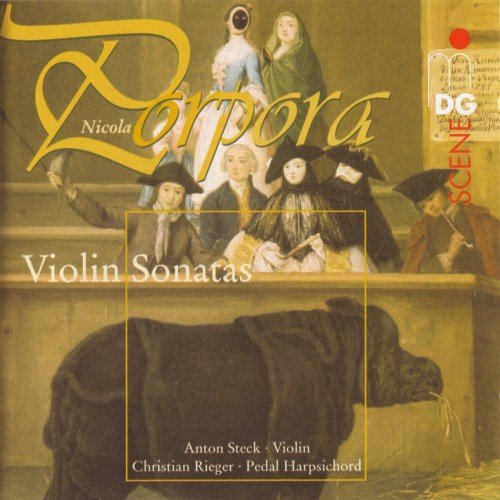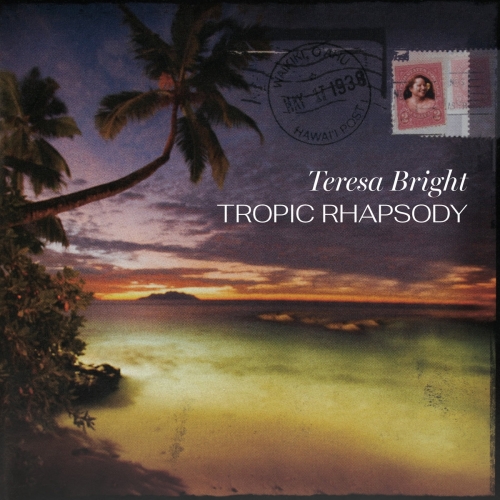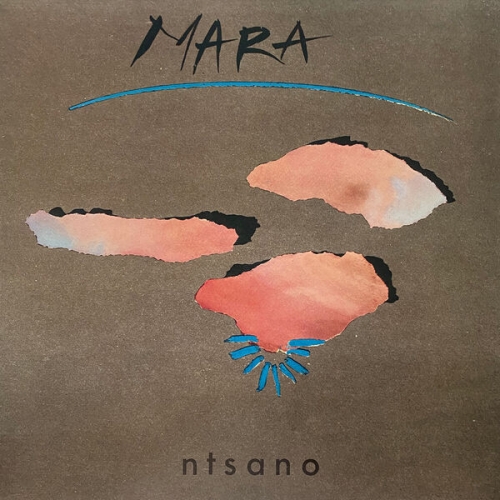Anton Steck, Christian Rieger - Porpora - Violin Sonatas (2001)

Artist: Anton Steck, Christian Rieger
Title: Porpora - Violin Sonatas
Year Of Release: 2001
Label: MDG
Genre: Classical
Quality: APE (image+.cue,log,scans)
Total Time: 73:32
Total Size: 476 Mb
WebSite: Album Preview
Tracklist: Title: Porpora - Violin Sonatas
Year Of Release: 2001
Label: MDG
Genre: Classical
Quality: APE (image+.cue,log,scans)
Total Time: 73:32
Total Size: 476 Mb
WebSite: Album Preview
01. Sonata VI in C major : Adagio [0:02:10.06]
02. Fuga Diatonico Enarmonico Cromatico [0:03:44.96]
03. Aria. Cantabile [0:03:54.86]
04. Allegro [0:02:53.90]
05. Sonata XI in D major : Moderato [0:05:22.49]
06. Presto [0:01:29.33]
07. Lento [0:02:54.73]
08. Allegro [0:03:23.13]
09. Sonata V in G minor : Adagio [0:02:05.50]
10. Fuga [0:03:13.29]
11. Adagio [0:02:32.20]
12. Allegro [0:04:34.77]
13. Sonata VIII in C major : Adagio [0:02:02.18]
14. Allegretto [0:03:12.97]
15. Adagio [0:02:24.13]
16. Allegro [0:03:49.30]
17. Sonata II in G major : Sostenuto [0:01:31.22]
18. Fuga [0:02:27.90]
19. Aria cantabile [0:02:22.53]
20. Allegro [0:02:56.56]
21. Sonata XII in D minor: Sostenuto [0:02:57.97]
22. Vivace [0:04:29.33]
23. Lento [0:03:03.36]
24. Allegro [0:03:53.64]
Performers:
Anton Steck - Violin
Christian Rieger - Pedar Harpsichord
Nicola Porpora, a contemporary of Bach, Handel, Vivaldi, and Haydn (and a very young Mozart) is best remembered today as a famous singing teacher and opera composer. During his long career (he lived to age 81) he suffered many employment-related difficulties and disappointments that caused him to move frequently. Naples (where he was born), Venice, Dresden, and Vienna (where he taught Haydn) all enjoyed Porpora's reputable presence, and he even spent a period in London at the behest of a group seeking to unseat Handel and his opera company from its preeminent position. In addition to his operas and vocal music, Porpora wrote instrumental works such as the six violin sonatas featured here, which are drawn from a set of 12. Although anyone familiar with Italian Baroque and early Classical-style solo violin music will discover nothing particularly original on this generally fine recording, if you enjoy that genre and period you'll find much here to indulge and satisfy your taste.
At least some of your enjoyment will come from violinist Anton Steck's facile technique and extensive use of ornaments--no opportunity for embellishment seems to be missed--and from the flashy way Steck exhibits his obvious delight in playing to the hilt such heavily double-stopped, suspension-ridden sections as the Sostenuto opening movement of Sonata No. 2 in G major. He follows this with a brilliantly executed Fuga, a lively and very tricky-to-play two and one half minutes of virtuoso display. Steck is a veteran of some of Europe's finest period orchestras (concertmaster of Musica Antiqua Köln; principal soloist, Les Musiciens du Louvre) and has previously demonstrated his solo prowess, notably in an acclaimed recording of Mozart sonatas (also MDG). He's certainly no slouch here, either (comparisons certainly will be made with Andrew Manze), but some listeners (including this one) may not fully appreciate the bright acoustic he and his harpsichord partner are given. Nor may they be totally impressed (as I wasn't) with how the pedal harpsichord is sometimes used, with the pedal line occasionally given too much prominence, making for some heavy textures. Most of the time, however, balances between instruments and overall textures are fine--and the music, especially many of the faster movements, offers considerable interest (the Allegros of Sonatas Nos. 2 and 11; the Vivace and Allegro of No. 12). Violinists will appreciate Steck's amazing command of the various bowing techniques required to make his instrument speak so articulately and dramatically. -- David Vernier
At least some of your enjoyment will come from violinist Anton Steck's facile technique and extensive use of ornaments--no opportunity for embellishment seems to be missed--and from the flashy way Steck exhibits his obvious delight in playing to the hilt such heavily double-stopped, suspension-ridden sections as the Sostenuto opening movement of Sonata No. 2 in G major. He follows this with a brilliantly executed Fuga, a lively and very tricky-to-play two and one half minutes of virtuoso display. Steck is a veteran of some of Europe's finest period orchestras (concertmaster of Musica Antiqua Köln; principal soloist, Les Musiciens du Louvre) and has previously demonstrated his solo prowess, notably in an acclaimed recording of Mozart sonatas (also MDG). He's certainly no slouch here, either (comparisons certainly will be made with Andrew Manze), but some listeners (including this one) may not fully appreciate the bright acoustic he and his harpsichord partner are given. Nor may they be totally impressed (as I wasn't) with how the pedal harpsichord is sometimes used, with the pedal line occasionally given too much prominence, making for some heavy textures. Most of the time, however, balances between instruments and overall textures are fine--and the music, especially many of the faster movements, offers considerable interest (the Allegros of Sonatas Nos. 2 and 11; the Vivace and Allegro of No. 12). Violinists will appreciate Steck's amazing command of the various bowing techniques required to make his instrument speak so articulately and dramatically. -- David Vernier

![VA - Who Loves You? A Tribute To Jaco Pastorius (2003) [Hi-Res] VA - Who Loves You? A Tribute To Jaco Pastorius (2003) [Hi-Res]](https://www.dibpic.com/uploads/posts/2025-12/1766570996_r8byrhmtd2qlc_600.jpg)
![Philippe Chrétien, Jeannot Steck - Eclipse - The Album (2025) [Hi-Res] Philippe Chrétien, Jeannot Steck - Eclipse - The Album (2025) [Hi-Res]](https://www.dibpic.com/uploads/posts/2025-12/1766208210_folder.jpg)



![Lionel Hampton - Many Splendored Vibes (Remastered) (2022) [Hi-Res] Lionel Hampton - Many Splendored Vibes (Remastered) (2022) [Hi-Res]](https://www.dibpic.com/uploads/posts/2025-12/1766397160_lhsv500.jpg)

